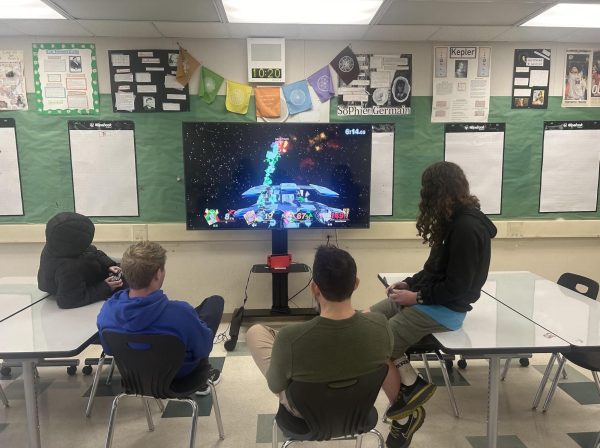The Works of Goichi Suda: Why You Should Care
With creative directors on projects, one of the most important things is style – style in writing, in aesthetics, in storytelling, and in the touches which creators add to their work, however, the creator which inspires and stands out to me the most is Goichi Suda, also known as Suda51. Born in Nagano, Japan in 1968, Suda is known for his works on various visual novels –games that are more akin to books, with art, music and sometimes voice acting– as well as games, Suda stands out compared to many other creative directors for his style, commonly interspersed with bizarre, yet real storylines.
Early in Goichi’s career, before even working on games, Suda would work as an undertaker in order to make ends meet, unsurprisingly, his job relating to death would end up as quite a large inspiration and factor in his later works, which would relate to both metaphorical and literal death. After working at Sega for a brief time, Suda would go on to create his own studio, Grasshopper Manufacture.
Can an individual really escape their past, killing it in a sense? To Goichi Suda, the answer is “No.” as reflected in his various creative projects throughout his career, as the main theme of his works is the past, or rather, individuals attempting to escape their past, only for them to be required to face it in order to grow as individuals. As a result, the name of the series which Suda has created is called Kill the Past.
Now where I’d love to go through the entirety of Suda’s career, due to language barriers, I am simply unable to cover all of his works, however his most important works have been translated: The Silver Case, Flower Sun and Rain, and The 25th Ward are the main works which will be covered. (Sadly I will not be covering Killer7 or No More Heroes due to the article being long as is.)
The Silver Case is Suda’s first project in which he had complete freedom over, and compared to other visual novels of the late 90s, it sticks out, with a cast of mostly adult men working as hard boiled detectives, and an insane storyline to boot. The Silver Case’s (TSC) main draw is from its dual storylines; in Transmitter you work as a silent detective named Akira in the Heinous Crimes Unit (HCU) investigating a bizarre string of crimes related to Kamui Uehara, a serial killer who has become a symbol of the city known as Ward 24. In the other storyline, Placebo, you work as Tokio Morishima, a freelance reporter investigating the same things in tandem, whilst learning about himself.
Despite the seemingly normal storyline, Goichi brings in bizarre elements, most of which will be tackled when discussing The 25th Ward. Suda brings forth a killer cast of characters who act as real individuals, in a bizarre setting, with real problems. Even the tone of character interactions are realistic, being able to swap from quite serious and dark, to comedic banter, similar to real people, the tones of conversations in Suda’s work are constantly shifting.
After The Silver Case comes Flower, Sun, and Rain (FSR), a game that entirely represents Grasshopper Manufacture’s motto: “Punk’s not dead.” I say this because the game basically hates the player, as well as the game’s protagonist, Sumio Mondo. A man tasked with saving an island from a terrorist threat, which then results in a Groundhog’s Day scenario. The game basically relies on the player going on these long treks where Mondo can only walk, only to have to solve “puzzles” which are just the player looking in their guidebook for the solution. The game even has a pedometer in the corner of the screen to rub in how much time you’ve wasted: however, the last hour of the game does tie in with the rest of Suda’s work, so it is still important to play, even if it can feel like a hassle.
After TSC and FSR , comes The Silver Case: The 25th Ward (25W), Suda’s most bizarre project in his career, with not only 3 separate storylines, but his strangest –in a positive way– choices as a writer yet. (25W) is set in a new city in Japan, Ward 25, a “utopia” of sorts which aims to remove individuality from its citizens in order to keep up the guise of a utopia, giant white buildings that make the setting feel sterile to a near painful degree.
However, the oddities don’t stop there, as the “Correctness” storyline in The 25th Ward is Suda’s strangest work yet, as the latter half focuses on Kosuke Kurmizawa, an antagonist who operates above reality, observing every single action of every single character, while having godlike capabilities. Kurumizawa is then in conflict with Mokutaro Shiroyabu, a member of the 25th Ward’s HCU who after releasing his frustrations on an ATM, and fighting off a large number of hitmen, reaches his own levels of godlike strength. A familiar face from TSC, Sumio Kodai, even appears in the “Correctness” storyline, in a chapter which is hard to tell which points are in the character’s head, or actually happening, however, it is one of, if not my favorite chapter in the series.
The two other storylines are “Matchmaker” and “Placebo”, which follow two cops as they investigate their own string of crimes, it plays out like a buddy cop scenario, with the same Suda brand twists and some excellent writing. The “Placebo” storyline even returns, starring a now amnesiac Tokio Morishima as he investigates the happenings of the 25th Ward itself.
Whilst Suda’s work can be hard to sell to those interested in it, as explaining it makes an individual come off as a madman, his works are simply like no other. Yet, despite their bizarreness Suda’s writing and style as an individual makes his odd scenarios very human experiences. Albeit with his very strange plots, Suda stands out as a creator who strives to make the stories which he desires, with his own brand of flair and unusual stories.






